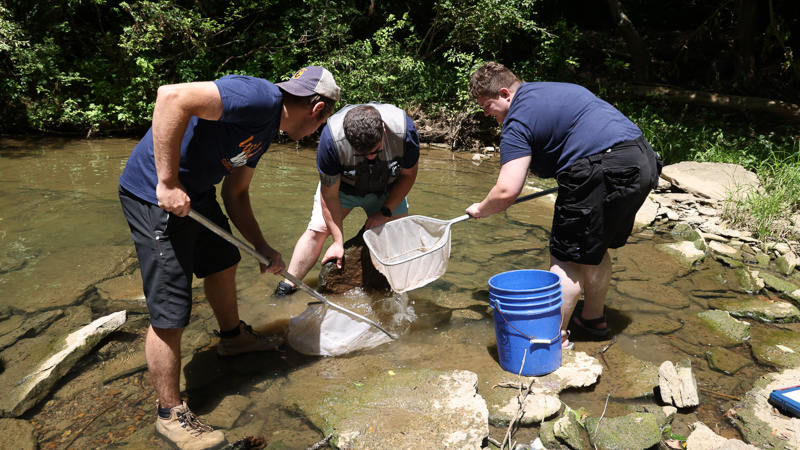Our Aquatics team continues to participate in conservation work in our Middle Tennessee neighborhood by monitoring local Nashville crayfish populations. Read the updates on this project below.
Our Aquatics team received a grant from U.S. Fish and Wildlife Service in 2011 to develop protocols and implement long-term population monitoring for the federally endangered Nashville crayfish. The Nashville crayfish (Faxonius shoupi) is the only animal whose entire range is located only in the greater Nashville area, as it is only found in Mill Creek and its tributaries (this includes the stream that flows through Nashville Zoo, although they aren’t found in this part of the stream). Nashville crayfish are considered endangered by the International Union for the Conservation of Nature due to development, pollution and agricultural run-off.

We have been actively involved in the research of this species to learn more about its population trends over time and monitor water quality. This June, our team once again visited Mill Creek at four different locations and recorded over 400 crayfish. These specific sites are only visited four times per year and have remained the same since the start of this project to accurately monitor the population changes in these areas of the creek. Recording the crayfish entails measuring the body, identifying the sex, and making note of the rock it was found under.
Nashville crayfish are usually found under flat slabs of limestone and other rocks in free-flowing creeks. Although this species is small in size, they play a valuable role in the overall ecosystem that it inhabits and is a source of food for more than 240 species, including fish, raccoons and reptiles.

Nashville crayfish can reach up to 7 inches in length and, like all crayfish, have four pairs of legs and two pinchers. You can help Nashville crayfish by keeping your local waterways clean. Even the smallest water system is important because all water eventually winds up in a large river, where cities acquire drinking water. You can help protect your local waterway by:
- Picking up trash and other pollution before it makes it into a creek or other waterway.
- Ensuring there is no exposed soil on your property and remembering that any pesticides or other pollutants that are left on the ground will be picked up with stormwater and will be deposited in a creek eventually.
- If you live along the stream, make sure not to cut down grasses or plants near the edge of the stream and to leave as many trees as possible. Those trees and native plants hold the soil and help filter stormwater runoff.



